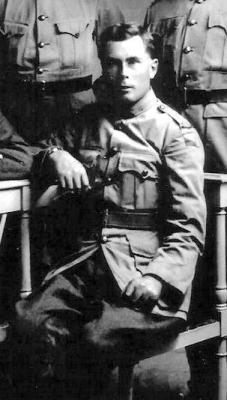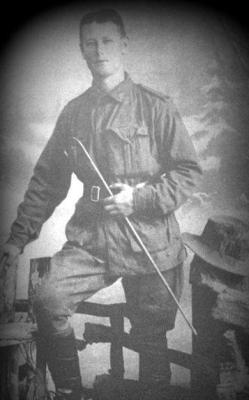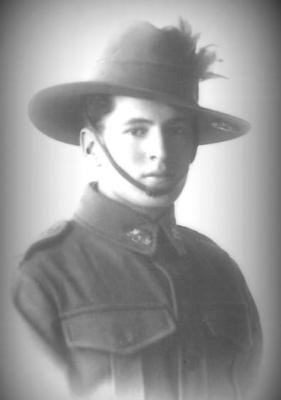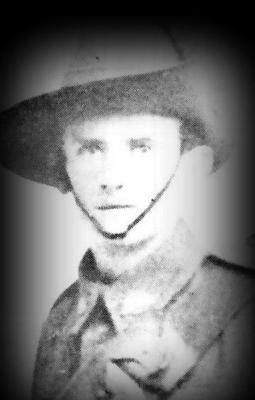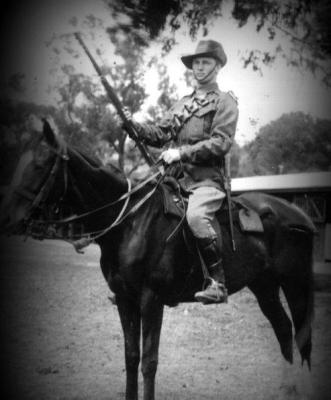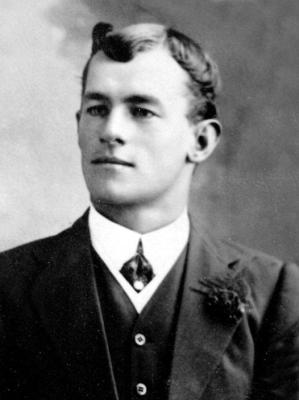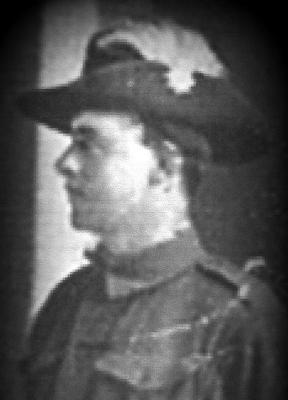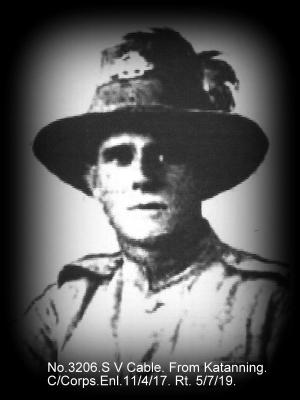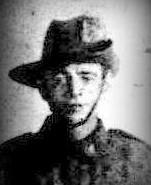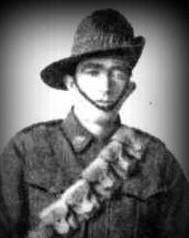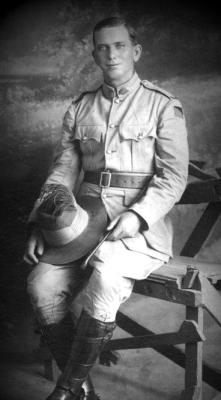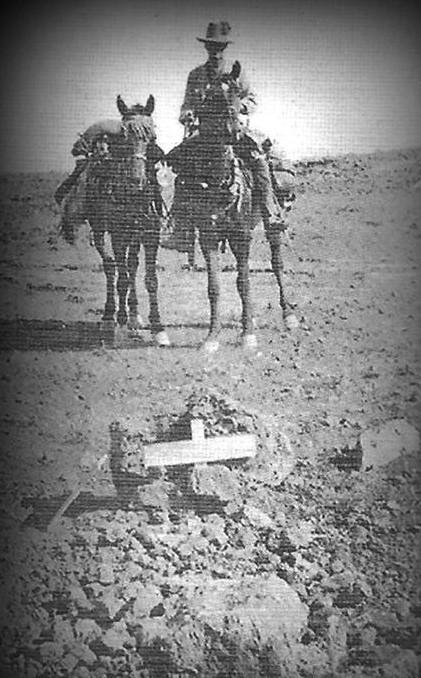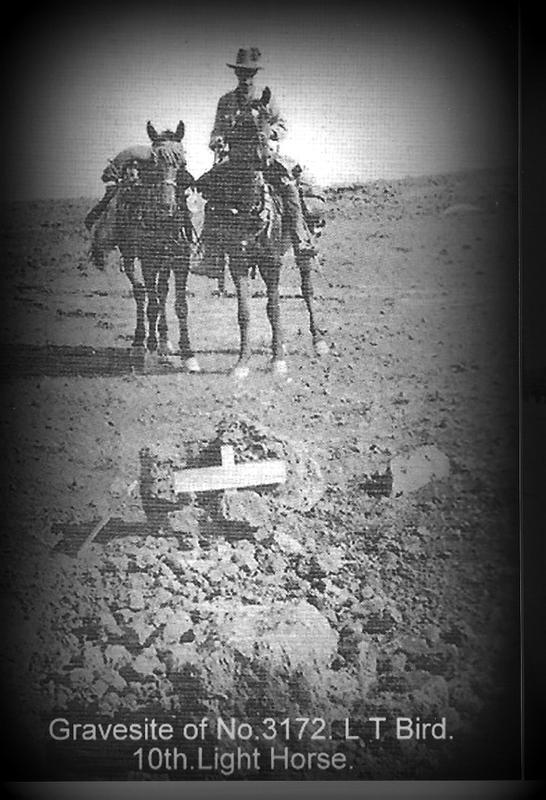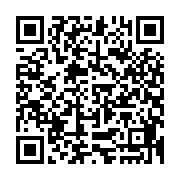World War 1, Australia, Western Australia, 3172 BIRD, 10 Light Horse
Photograph of original grave of 3172 Trooper Leslie Thomas Bird, killed in action,30 September 1918
10 Light Horse was raised as a squadron, then a regiment in October 1914.and formed part of the 3rd Light Horse Brigade in Egypt. The Regiment served dismounted in Gallipoli and fought at the charge at the Nek on 7 August 1915, and at Hill 60 on 29-30 August. The only Victoria Cross awarded to a Light Horseman recognised the valour of Lieutenant Hugo Throssell at Hill 60.
After Gallipoli the Regiment was bought up to strength to defended Egypt from the Ottoman Army advancing on the Suez Canal. Through 1916 they drove the Turks across the deserts of Sinai, participating in the battles of Romani and Magdhaba.
In 1917 as part of the Desert Column they advanced into Palestine and participated in the bloody battles to break the Gaza-Beersheba line and helped capture Jerusalem. They participated in the Es Salt Raid in May 1918. In August they were equipped with swords and retrained as cavalry. In this role they took part in the rout of the Ottoman army in the Jordan Valley, a campaign the light horse referred to as "The Great Ride". In September the 10th was the first formed regiment to enter Damascus.
Turkey surrendered on 30 October 1918. After the end of the war, the regiment saw action in putting down the Egyptian uprising of 1919. The Regiment was one of the few to return home as a formed unit.
Details
Details
It is clear that parts of the 10th Australian Light Horse Regiment were the first troops formally to enter Damascus when they passed through on their way to secure the Homs road and that Major Olden was handed the city by the acting governor, Emir Said.
However, as part of a wider Imperial policy, the British were keen to establish the Hashemites in a strong position in central Syria to destabilise French claims to this area enshrined in the 1916 Sykes-Picot agreement. Independently the Hashemites wanted to move their power-base from the distant and sparsely populated Hejaz to Syria and establish themselves as the legitimate and natural heirs to Turkish rule there.
To support these goals the British authorities decided Fesial and his army needed to emerge as the liberators of Damascus, despite the clear military victories of the Egyptian Expeditionary Force under General Sir Edmund Allenby which had led to it. Allenby therefore ordered his troops not to enter the city, but bypass it and it was solely for pragmatic reasons that the 10th Light Horse cut through it rather than moving round.
Lawrence, as Fesial's advisor and liaison with Allenby, entered Damascus only a short time after the Light Horse departed. Damascus was thus deemed to have been liberated by the Hashemite army led by Feisal that had fought its way north from the Hejaz.
This photograph is part of the extensive Phil Sullivan 10th Light Horse Collection donated to the Army Museum in November 2023.
Open in Google Maps
Nearest geotagged records:
- World War 1, Australia, Western Australia, 1065 WHITFIELD, 10 Light Horse (0km away)
- World War 1, Australia, Western Australia, 3618 COWAN, 10 Light Horse (0km away)
- World War 1, Australia, Western Australia, 3180 GOYDER, 10 Light Horse (0.01km away)
- World War 1, Australia, Western Australia, 3220 KIRKPATRICK, 10 Light Horse (0.01km away)
- World War 1, 47 COX, 10 Light Horse, 1914 (0.01km away)
Australian Army Museum of Western Australia
Australian Army Museum of Western Australia
Other items from Australian Army Museum of Western Australia
- World War 1, Australia, Western Australia, 3173 BUNNEY, 10 Light Horse
- World War 1, Australia, Western Australia, 3180 GOYDER, 10 Light Horse
- World War 1, Australia, Western Australia, 3182 HOWELL, 10 Light Horse
- World War 1, Australia, Western Australia, 3190 LEWIS, 10 Light Horse
- World War 1, Western Australia, 3193 SKUTHORP, 10 Light Horse
- World War 1, Australia, Western Australia, 3196 TASSELL, 10 Light Horse
- World War 1, Australia, Western Australia, 3198 BLYTHE, 10 Light Horse
- World War 1, Australia, Western Australia, 3206 CABLE, 10 Light Horse
- World War 1, Australia, Western Australia, 3220 KIRKPATRICK, 10 Light Horse
- World War 1, Australia, Western Australia, 3222 LAMBERT, 10 Light Horse
- World War 1, Australia, Western Australia, 3232 FULLWOOD, 10 Light Horse
- World War 1, Australia, Western Australia, 3233 GILL, 10 Light Horse
